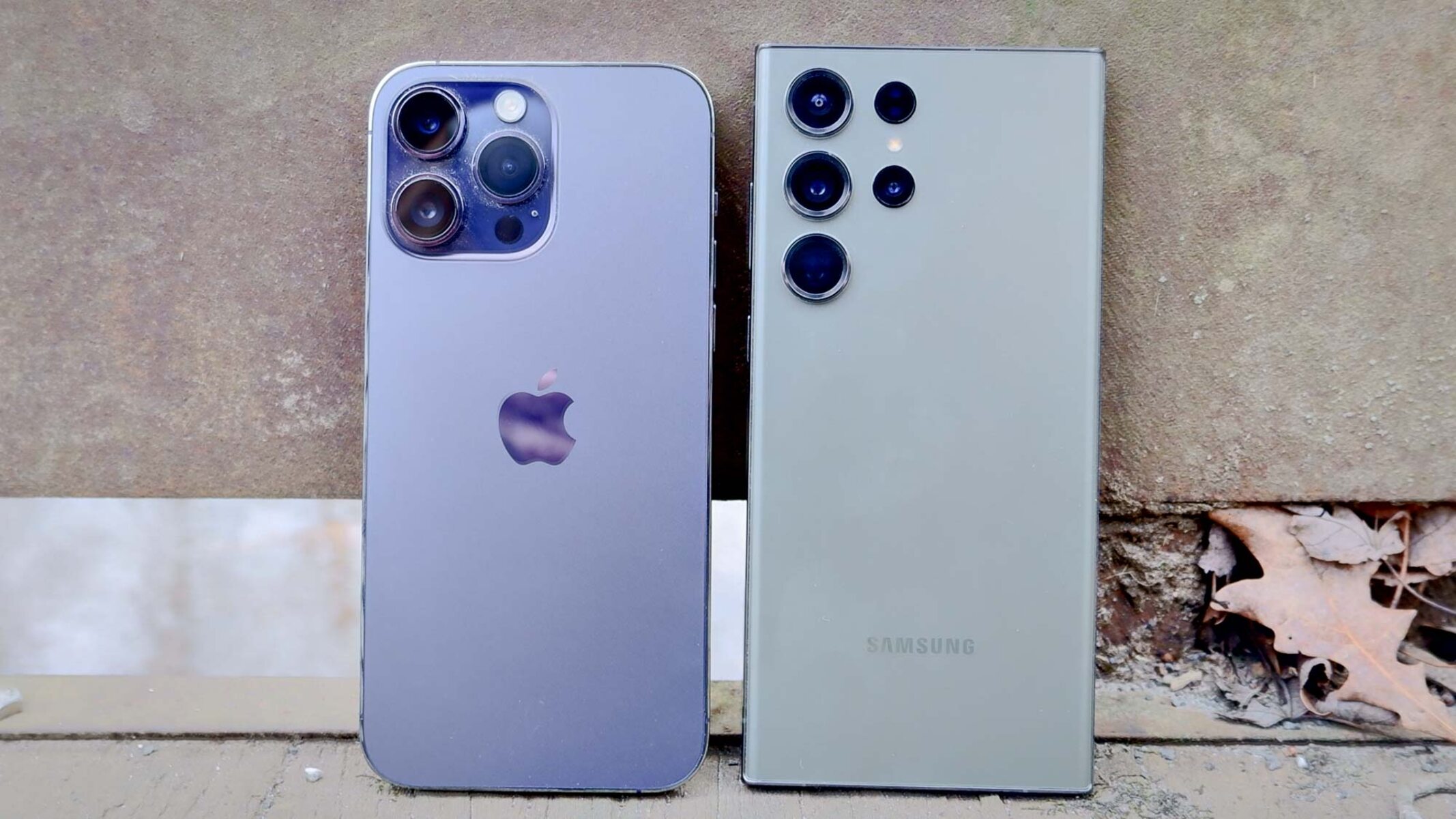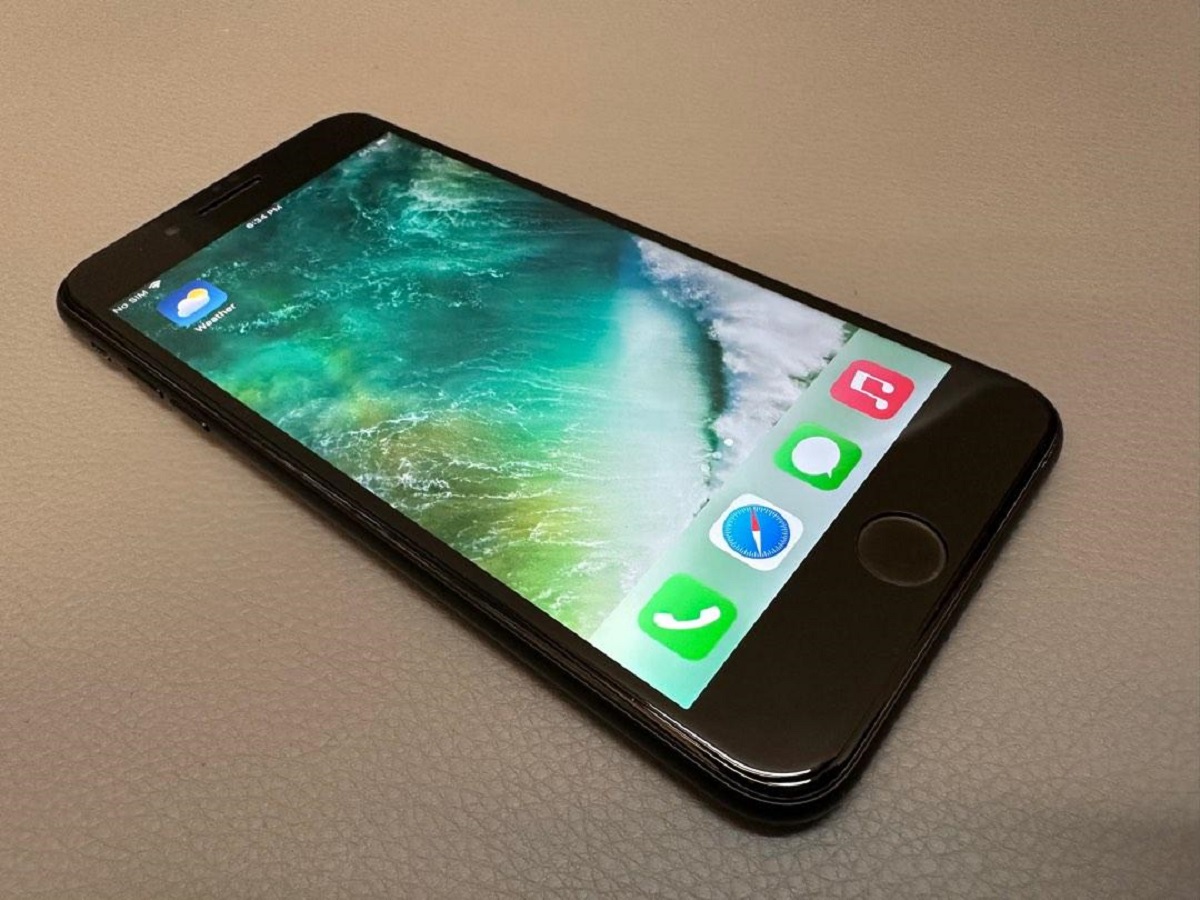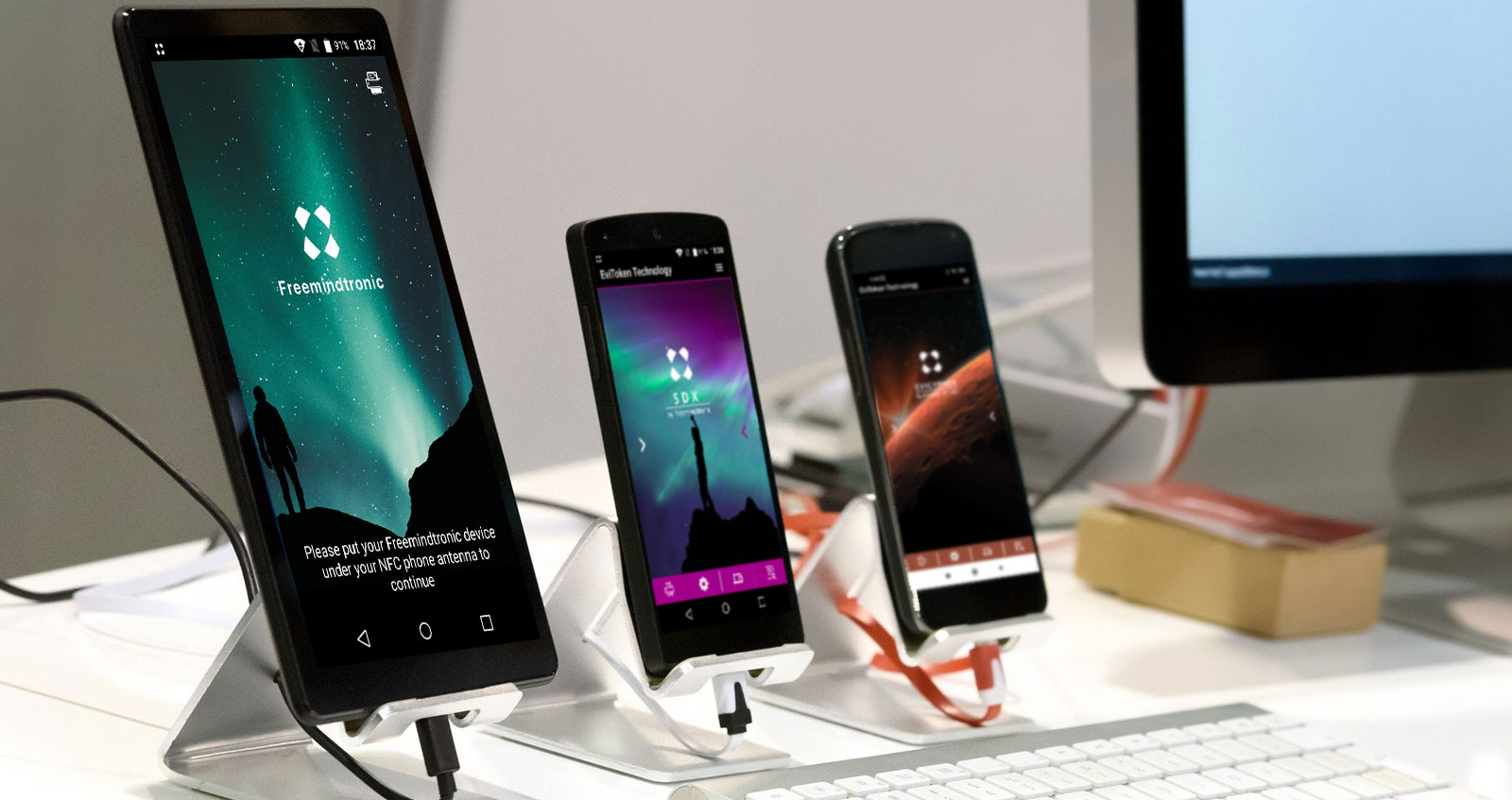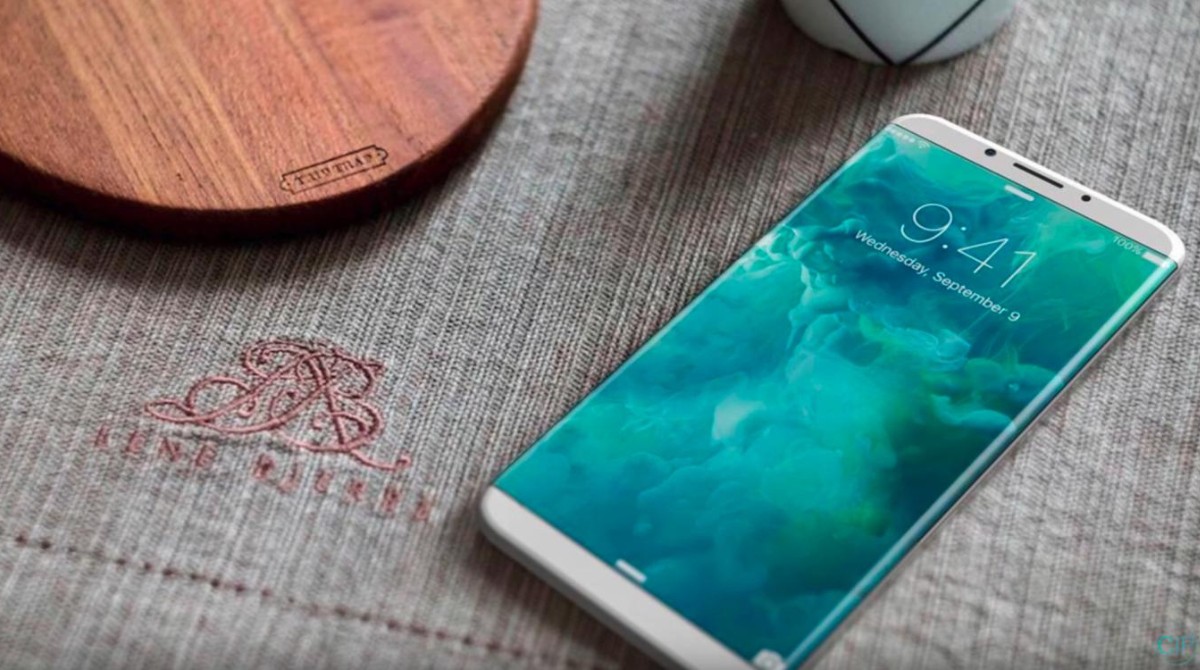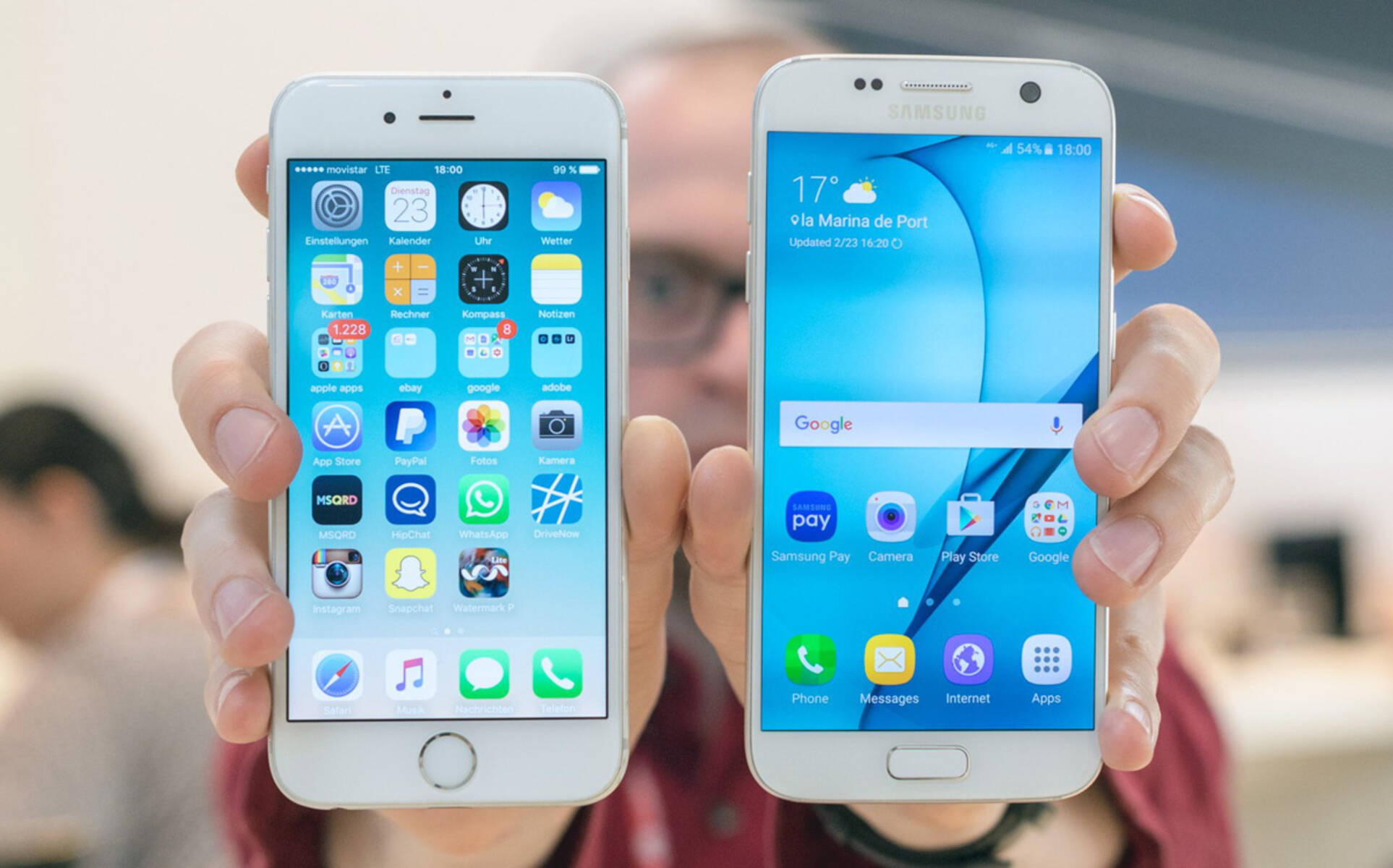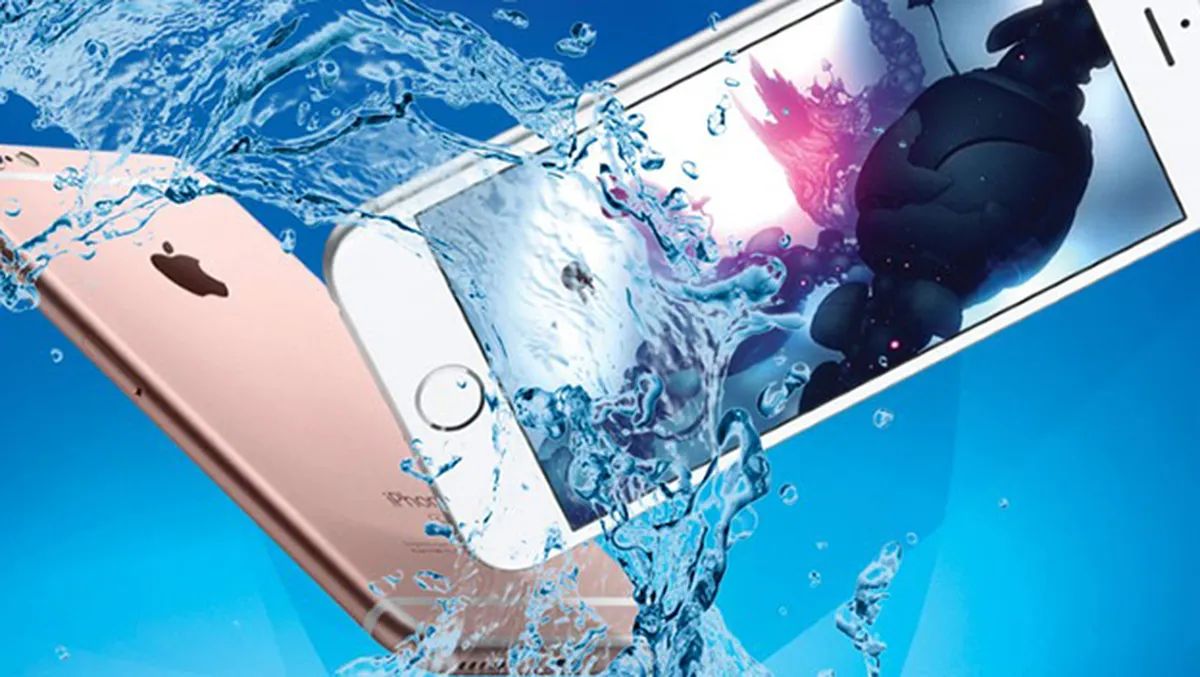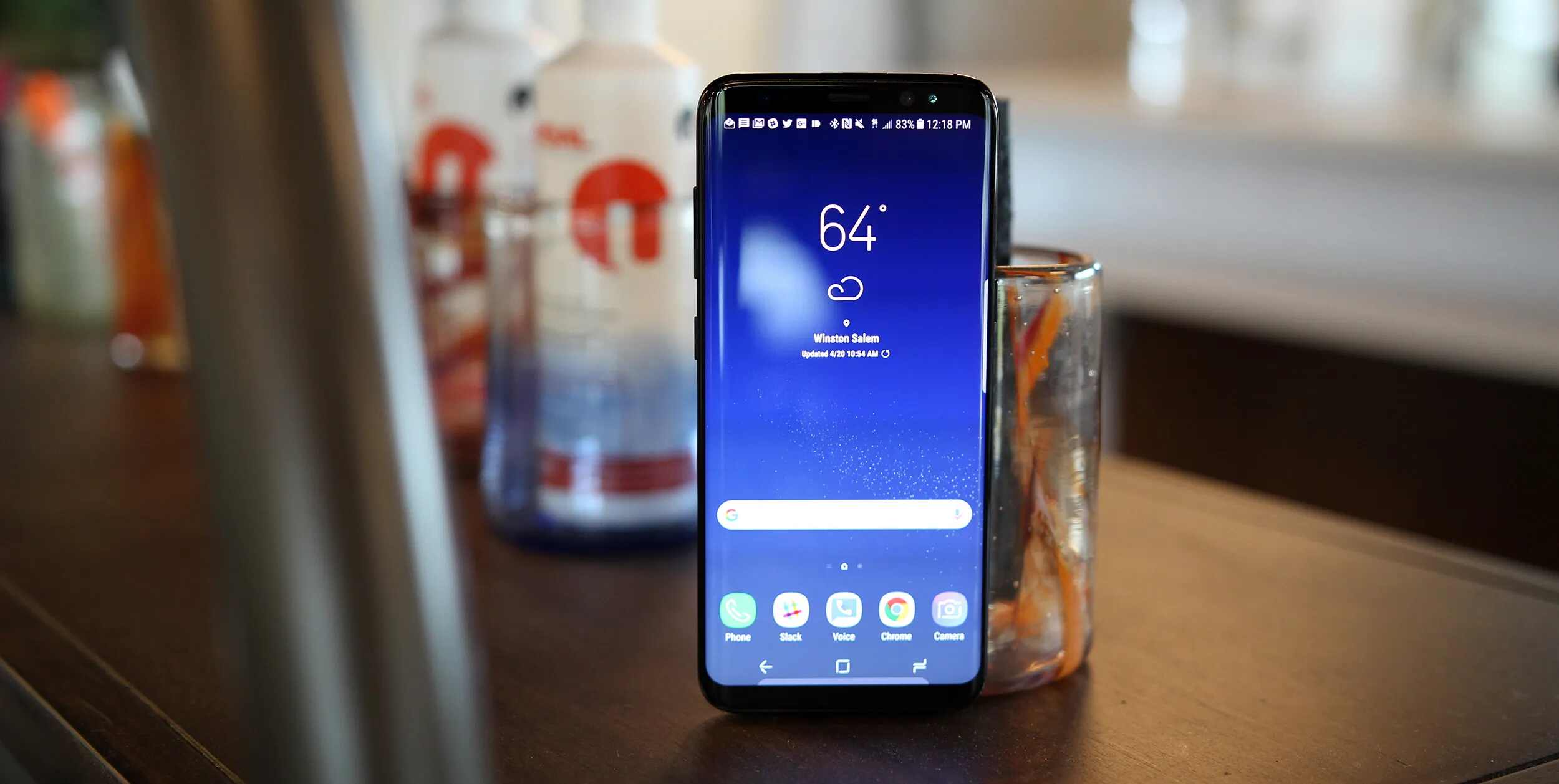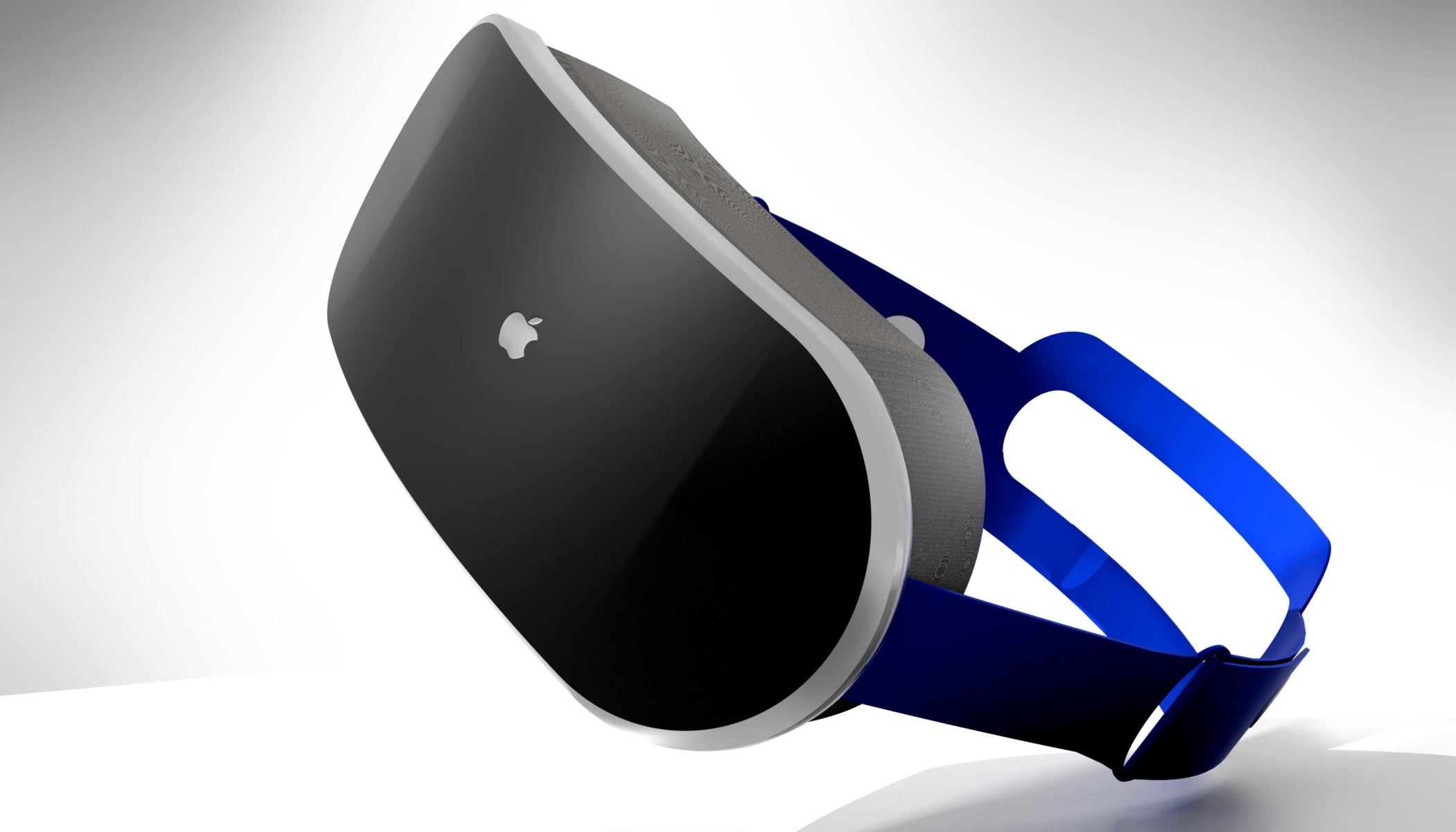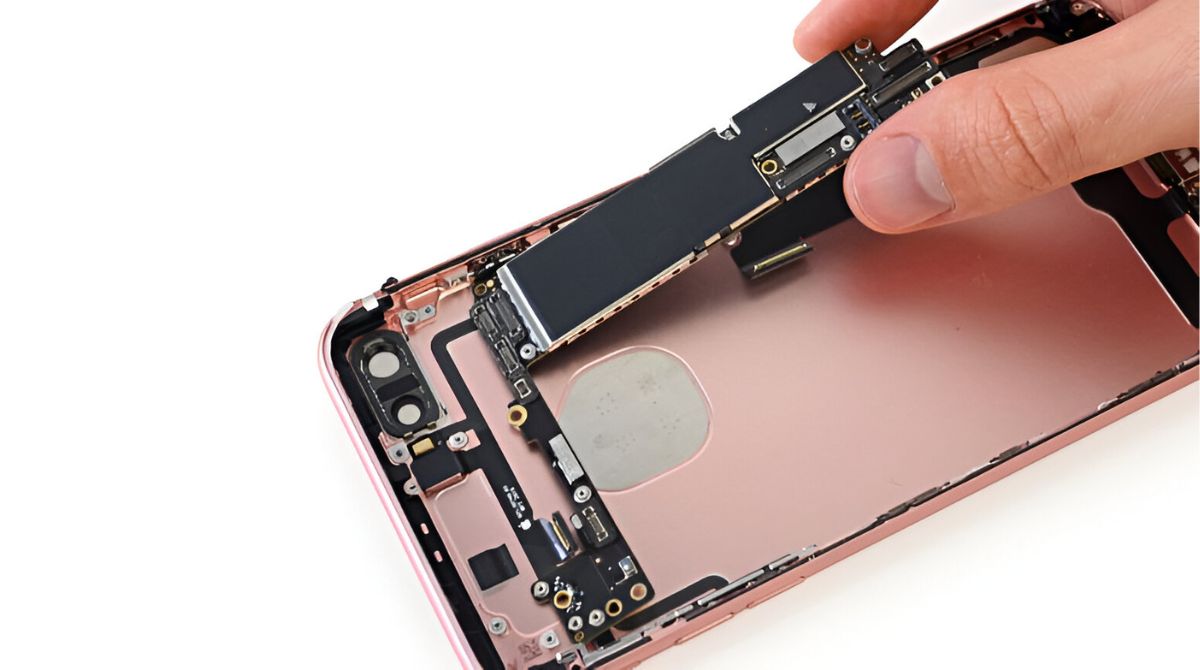Introduction
Smartphones and iPhones have become an integral part of our daily lives. With their advanced features and capabilities, these devices have revolutionized the way we communicate, work, and access information. However, many people often wonder what sets a smartphone apart from an iPhone. While both terms are used interchangeably, there are some key differences that distinguish them.
A smartphone, in its simplest definition, refers to a mobile phone that offers advanced computing capabilities and connectivity beyond the traditional voice calling and text messaging functions. It combines the features of a mobile phone with those of a computer, enabling users to browse the internet, use various applications, and perform a wide range of tasks.
On the other hand, an iPhone is a brand of smartphones developed and marketed exclusively by Apple Inc. It runs on Apple’s proprietary operating system called iOS, offering a seamless and distinctive user experience. The iPhone is known for its sleek design, powerful performance, and top-notch camera capabilities.
In this article, we will delve into the specific differences between a smartphone and an iPhone, shedding light on various aspects such as design, operating system, performance, camera quality, battery life, connectivity, and price. By understanding these differences, you’ll be able to make an informed decision when choosing between a smartphone and an iPhone that best suits your needs and preferences.
So, let’s dive in and explore the fascinating world of smartphones and iPhones!
Definition of Smartphone
In today’s tech-driven world, smartphones have become our constant companions. A smartphone is a mobile device that offers advanced computing capabilities and functionality beyond the scope of traditional mobile phones. It serves as a mini-computer that fits in the palm of your hand, allowing you to perform a wide range of tasks conveniently.
Smartphones are equipped with a variety of features that enable users to communicate, connect to the internet, send and receive emails, take photos and videos, access social media platforms, download and use applications, and more. These devices have a touchscreen interface, which provides a user-friendly and interactive experience.
One of the distinguishing features of a smartphone is its operating system. Most smartphones utilize popular operating systems such as Android, iOS, or Windows. These operating systems offer a user-friendly interface, seamless integration with applications, and regular system updates to ensure optimal performance.
Additionally, smartphones come equipped with various connectivity options such as Wi-Fi, Bluetooth, and cellular data. This allows users to connect to the internet, share files, and communicate with others hassle-free. Many smartphones also have built-in GPS capabilities, which enable location tracking and navigation.
Smartphones have transformed the way we communicate and access information. With access to the internet at our fingertips, we can stay connected with friends, family, and colleagues regardless of our location. Whether it’s making video calls, sending instant messages, or browsing social media platforms, smartphones have revolutionized the way we interact and stay connected.
Moreover, smartphones offer a vast array of applications that cater to various needs and interests. Whether it’s productivity tools, entertainment apps, fitness trackers, or educational resources, there is an app for almost everything. Users can download these apps from digital distribution platforms such as the Google Play Store or Apple App Store.
Overall, smartphones have become an essential tool in our modern lives. They combine the functionality of a mobile phone, computer, camera, and much more into a compact and portable device. With their advanced features and ever-evolving technology, smartphones continue to redefine the way we communicate, work, and access information.
Definition of iPhone
When it comes to smartphones, the iPhone stands out as a brand that has redefined the mobile industry. The iPhone is a line of smartphones developed and marketed exclusively by Apple Inc. Known for their sleek design, cutting-edge technology, and seamless user experience, iPhones have become iconic devices that have captured the hearts of millions around the world.
What sets the iPhone apart from other smartphones is its exclusive use of the iOS operating system. iOS is Apple’s proprietary operating system, specifically designed to optimize the performance and user experience on iPhones. With its intuitive interface, smooth navigation, and impressive security features, iOS offers a seamless and cohesive ecosystem for iPhone users.
One of the standout features of the iPhone is its exceptional build quality. Apple has always been known for its attention to detail and commitment to craftsmanship, and this is reflected in the design of iPhones. From the premium materials used to the precise engineering, iPhones boast a sleek and elegant design that exudes sophistication.
Another aspect that sets the iPhone apart from other smartphones is its integration with the Apple ecosystem. iPhones seamlessly sync with other Apple devices such as Macs, iPads, and Apple Watches, allowing for a seamless flow of information and the ability to work across multiple platforms effortlessly.
One of the key areas where the iPhone excels is its camera capabilities. Apple has continuously pushed the boundaries of smartphone photography with each new iPhone release. From advanced image processing algorithms to multiple lenses and enhanced low-light performance, iPhones consistently deliver stunning photographs and videos.
Battery life is another area where iPhones stand out. Apple has made significant strides in optimizing battery performance, offering all-day battery life for most iPhone models. The efficiency of iOS, combined with intelligent power management features, ensures that users can rely on their iPhones for extended periods without worrying about running out of power.
Connectivity is also a strong suit of the iPhone. With support for the latest wireless technologies, fast charging capabilities, and compatibility with a wide range of accessories, iPhones offer a seamless and convenient user experience when it comes to staying connected.
While iPhones are known for their premium features and performance, they do come at a higher price point compared to other smartphones. The quality craftsmanship, advanced technology, and overall user experience contribute to their higher price tag, appealing to those who value quality and performance.
In summary, the iPhone is a line of smartphones that represents the pinnacle of Apple’s innovation and design. With its exclusive use of iOS, exceptional build quality, seamless integration with the Apple ecosystem, outstanding camera capabilities, long-lasting battery life, and top-notch connectivity, the iPhone offers a premium smartphone experience that many users find irresistible.
Design and Build
When it comes to design and build, both smartphones and iPhones display distinct characteristics that set them apart from one another. While smartphones come in a wide range of designs and builds due to their diverse manufacturers and models, iPhones are known for their iconic and premium look.
Smartphones often showcase a variety of designs, including metal frames, glass backs, or even plastic bodies. Different manufacturers put their own spin on the design, with some opting for sleek and minimalist aesthetics while others prioritize durability and ruggedness. This wide array of design choices allows consumers to find a smartphone that suits their personal style and preferences.
On the other hand, iPhones have a reputation for their sleek and luxurious design. With their well-crafted aluminum or glass bodies, iPhones exude an elegance and sophistication that many find appealing. Apple’s attention to detail is evident in the seamless integration of components, absence of visible seams or gaps, and the use of premium materials that contribute to the overall aesthetics and premium feel of the device.
Moreover, iPhones are often praised for their ergonomics and comfortable handling. The rounded edges and smooth finish of iPhones ensure a comfortable grip, making them easy to hold and use with one hand. Apple’s meticulous design approach also extends to the placement and accessibility of buttons and controls, providing a seamless user experience.
In terms of build quality, iPhones are renowned for their durability and sturdiness. Apple employs robust materials and rigorous manufacturing processes to ensure that iPhones can withstand everyday wear and tear. This attention to durability assures users that their iPhones can withstand accidental drops, scratches, and other minor mishaps, ensuring the longevity of the device.
Smartphones, being offered by various manufacturers, often vary in terms of build quality. While some models may prioritize durability and utilize sturdy materials, others may focus on affordability and prioritize lighter materials. It is important for consumers to consider their usage patterns and personal preferences when selecting a smartphone that aligns with their requirements.
Overall, the design and build of a smartphone or iPhone play a significant role in the user experience. While smartphones boast a wide array of design options and materials, iPhones are known for their iconic and premium look, combining sleek aesthetics with exceptional build quality.
Operating System
The operating system is a crucial aspect of any smartphone or iPhone as it determines the user interface, functionality, and overall user experience. While smartphones come with a variety of operating systems to choose from, iPhones operate exclusively on Apple’s iOS.
Android is the most widely used operating system in the smartphone market, offering a diverse range of customization options and a vast selection of devices from different manufacturers. Android provides users with a high level of flexibility to personalize their device, enabling customization of themes, widgets, and home screens. It also offers seamless integration with Google services, such as Gmail, Google Maps, and Google Drive.
iOS, on the other hand, is the operating system developed specifically for iPhones and Apple devices. Known for its intuitive and user-friendly interface, a key characteristic of iOS is its sleek and cohesive design. The uniformity of the iOS experience across all iPhones ensures consistency and ease of use, making it accessible even for those new to smartphones.
Both Android and iOS have their own respective app stores, offering a wide range of applications for users to download and enjoy. Android’s Google Play Store provides a vast selection of apps, including both free and paid options. iOS has the Apple App Store, which is known for its stringent app review process, ensuring a higher level of quality and security for users.
Another significant difference between the operating systems is the frequency of system updates. Android releases updates regularly, but these updates may be delayed due to the diverse range of devices and manufacturers that use the operating system. In contrast, iOS updates are released simultaneously for all compatible devices, ensuring that users receive the latest features, security enhancements, and bug fixes in a timely manner.
Security is a vital consideration when it comes to operating systems. Android offers various security features, including app permissions and Google Play Protect, which scans apps for potential malware. iOS, however, is renowned for its stringent security measures, including regular security updates, robust encryption, and a strict app review process. These measures contribute to iOS’ reputation for providing a secure and protected user experience.
When selecting between a smartphone and an iPhone, the choice of operating system ultimately comes down to personal preference. Android provides a high level of customization and a wide range of device options, while iOS offers a seamless and intuitive user experience with tightly integrated Apple services.
In summary, the operating system is a significant factor in determining the user experience on a smartphone or an iPhone. Android offers customization options and a diverse range of devices, whereas iOS provides a sleek and intuitive interface with a unified experience across all iPhones and exceptional security measures.
App Store
The availability of applications plays a vital role in enhancing the functionality and user experience of a smartphone or iPhone. Both platforms, Android and iOS, have their own dedicated app stores that offer a vast array of applications for users to download and enjoy.
Google Play Store is the default app store for Android devices. It provides a wide selection of apps, including various categories such as communication, productivity, entertainment, games, and more. Users can browse through a vast collection of both free and paid applications, giving them the freedom to choose apps that suit their needs and preferences.
One of the advantages of the Google Play Store is the open nature of the Android platform. This allows developers to create and publish applications with relative ease, resulting in a larger number of available apps. Additionally, the Play Store offers a range of customization options, allowing users to personalize their smartphone experience with different launchers, themes, and widgets.
On the other hand, iPhones and other Apple devices exclusively use the Apple App Store. Known for its stringent app review process, the App Store ensures a higher level of quality and security for users. Apps available in the App Store are thoroughly reviewed to ensure they meet Apple’s strict guidelines, ultimately providing a more curated experience for users.
The Apple App Store offers a vast selection of applications across various categories, including productivity, education, photography, health and fitness, and many more. The store features both free and paid apps, with options for in-app purchases for additional features or content. The interface of the App Store is clean and user-friendly, making it easy for users to discover and download new apps.
One standout feature of the Apple App Store is the emphasis on app quality and optimization for iOS devices. Apple provides developers with guidelines and resources to ensure their apps are optimized, taking full advantage of the latest features and advancements in iOS. This results in a more consistent and seamless user experience across different apps and iOS versions.
Both the Google Play Store and the Apple App Store have robust app discovery mechanisms that help users find new and popular apps. These mechanisms include personalized recommendations, top charts, user reviews and ratings, and editor’s picks. These features enable users to explore and discover apps that align with their interests and preferences.
It’s important to note that while the Google Play Store offers a wider range of apps due to the open nature of the Android platform, the Apple App Store is known for its focus on quality and security, ensuring a more curated and optimized app experience for iPhone users.
In summary, the app store is a crucial component of both smartphones and iPhones, offering a vast selection of applications to meet diverse user needs. The Google Play Store provides a wider range of apps with customization options, while the Apple App Store focuses on quality and security, resulting in a more curated and optimized app experience.
Performance
Performance is a critical factor to consider when comparing the capabilities of smartphones and iPhones. Both devices aim to deliver smooth and efficient performance, allowing users to navigate through applications, multitask, and engage in various activities seamlessly.
Smartphones powered by the Android operating system offer a wide range of device options, with varying specifications and performance levels. The performance of these devices depends on factors such as the chipset, RAM, and software optimization. High-end Android smartphones often feature powerful processors and ample RAM, enabling them to handle demanding tasks, such as gaming or resource-intensive applications, with ease.
Additionally, Android devices provide users with the flexibility to optimize performance according to their preferences. Users can customize system settings, such as animation speed and background processes, to strike a balance between performance and battery life.
On the other hand, iPhones are known for their exceptional performance and smooth user experience. Apple designs and develops both the hardware and software of iPhones, allowing for seamless integration and optimization. iPhones typically feature powerful processors, high-performance GPUs, and sufficient RAM, ensuring swift and efficient performance across various tasks and applications.
Furthermore, iOS, the operating system exclusively used by iPhones, is designed to maximize system resources and deliver consistent performance. The closed nature of the iOS ecosystem allows for more streamlined software updates and optimizations, resulting in a more stable and efficient user experience.
Benchmark tests consistently show that iPhones generally outperform Android devices in terms of processing power and performance. This is attributed to the robust hardware-software integration, rigorous performance optimization, and Apple’s focus on delivering an exceptional user experience.
It’s worth noting that while iPhones tend to perform exceptionally well, high-end Android devices can also offer impressive performance capabilities. The performance difference between the two platforms might not always be noticeable during day-to-day tasks. However, in resource-intensive activities or gaming, the power and optimization of iPhones become more evident.
Ultimately, when it comes to performance, both smartphones and iPhones strive to offer smooth and efficient user experiences. While high-end Android devices can deliver impressive performance, iPhones consistently excel in benchmark tests and are known for their exceptional hardware-software integration, resulting in a seamless and powerful user experience.
Camera
The camera capabilities of smartphones and iPhones have become a significant factor in the purchasing decision for many users. With the constant advancement in camera technology, both smartphones and iPhones strive to offer impressive photography and videography experiences.
Smartphones equipped with the Android operating system offer a wide range of camera configurations. Different manufacturers incorporate various camera setups, including single, dual, triple, or even quad-camera systems, each serving a specific purpose. These cameras often come with different resolutions, aperture sizes, and focal lengths, enabling users to capture diverse types of photographs.
Android smartphones also offer a variety of camera features and shooting modes, such as portrait mode, night mode, HDR, and manual controls. These features provide users with more control and creative options when capturing photos or videos. Additionally, the widespread use of image processing algorithms in Android devices helps enhance image quality, producing detailed and vibrant results.
On the other hand, iPhones are renowned for their outstanding camera capabilities. Apple continuously pushes the limits of smartphone photography with each new iPhone release. iPhones employ advanced camera sensors, precision optics, and powerful image processing capabilities to deliver impressive results.
Apple’s iPhones often feature improved low-light performance, allowing users to capture brighter and more detailed photos even in challenging lighting conditions. The Portrait mode on iPhones is highly regarded for its sophisticated bokeh effect, which creates a depth-of-field effect, resulting in stunning portraits with beautifully blurred backgrounds.
Additionally, iPhones prioritize computational photography, harnessing the power of their advanced processors and software algorithms to enhance image quality. This enables features like Smart HDR, which captures multiple exposures and combines them seamlessly to create photos with improved dynamic range and detail.
When it comes to video recording, both Android smartphones and iPhones offer high-quality capabilities. Many Android devices support video recording in 4K resolution, while iPhones have led the industry, introducing features such as cinematic video stabilization, extended dynamic range, and the ability to shoot in Dolby Vision HDR.
It’s worth noting that camera performance can vary across different smartphone models and manufacturers. While some Android smartphones may rival iPhones in specific camera aspects, iPhones have consistently impressed users and professionals alike with their camera capabilities, image processing, and overall image quality.
Ultimately, when considering the camera capabilities of smartphones and iPhones, it’s essential to research and compare camera specifications, sample images, and user reviews to determine which device aligns with your specific photography and videography needs.
Battery Life
Battery life is a critical aspect of smartphones and iPhones that directly impacts the user experience and usability of the device. Both smartphones and iPhones strive to provide sufficient battery power to last through a day of normal usage, but there are notable differences in how they achieve this.
Android smartphones come from a variety of manufacturers, each with their own optimizations and battery management techniques. Battery life can vary significantly depending on factors such as the device’s specifications, software optimizations, and user habits. Some Android devices offer larger battery capacities, allowing for longer usage before requiring a recharge.
Android offers various power-saving features that allow users to maximize battery life. These features can include battery optimization settings, adaptive battery, and dark mode, among others. Additionally, Android provides users with more flexibility in customizing power-saving options, enabling them to customize settings and restrict background activities to conserve battery life.
Apple has a reputation for optimizing battery efficiency in iPhones. The tight integration between the hardware and software allows Apple to deliver a highly optimized user experience and efficient power management. iPhones typically offer good battery life, thanks to Apple’s focus on power optimization, app efficiency, and intelligent management of system resources.
iOS provides features like Low Power Mode, which helps extend battery life by temporarily reducing system animations, background data fetch, and other non-essential features. Furthermore, Apple’s system-wide control over app optimization ensures that apps run efficiently, minimizing battery drain.
It’s important to note that battery life can be influenced by various factors like screen brightness, usage patterns, network connectivity, and running resource-intensive applications. The battery performance of a specific device may also degrade over time, affecting its overall usage duration.
While both Android smartphones and iPhones aim to provide satisfactory battery life, iPhones are known to have more consistent and optimized battery performance. Apple’s tight integration of hardware and software, along with their dedicated focus on battery efficiency, results in iPhones typically delivering a reliable and lasting battery experience.
Ultimately, battery life is a crucial consideration when choosing between a smartphone and an iPhone. It’s essential to research and compare the battery capacities, power-saving features, and real-world usage scenarios to select a device that meets your specific needs and expectations.
Connectivity
Connectivity is a key aspect to consider when comparing smartphones and iPhones, as it determines how we connect to the internet, share data, and communicate with others. Both smartphones and iPhones offer a range of connectivity options, but there are differences in terms of compatibility and capabilities.
Smartphones powered by the Android operating system usually come with various connectivity options. Most Android devices support Wi-Fi, allowing users to connect to wireless networks for high-speed internet access. Bluetooth is also a standard feature on Android smartphones, enabling users to connect and exchange data with other compatible devices wirelessly.
Android smartphones support a wide range of cellular networks, including 2G, 3G, and 4G LTE. The availability of 5G connectivity varies depending on the specific model, as it is being gradually rolled out across different regions. Additionally, Android devices often come equipped with slots for expandable storage, such as microSD cards, allowing users to increase their device’s storage capacity.
iPhones, on the other hand, offer robust connectivity options tailored specifically for Apple’s ecosystem. They support standard Wi-Fi and Bluetooth connectivity, similar to Android smartphones. However, iPhones have their proprietary feature called AirDrop, which allows for seamless file transfer between Apple devices in close proximity.
As for cellular connectivity, iPhones support various networks, including 2G, 3G, and 4G LTE. Some recent iPhone models also offer 5G compatibility, allowing users to take advantage of faster download and upload speeds in areas with 5G coverage.
iPhones do not typically come with expandable storage options like microSD cards. Instead, users can choose different storage capacities when purchasing the device. The iCloud service provided by Apple offers cloud storage options for storing files, photos, videos, and other data.
In terms of software features, Android smartphones often provide greater flexibility in terms of customizations and compatibility with third-party apps. For instance, Android devices are more lenient when it comes to sideloading apps outside of the official app stores, providing users with expanded options.
Meanwhile, iPhones offer a more tightly controlled ecosystem, ensuring a highly secure and curated experience. The App Store serves as the primary platform for downloading and updating apps, ensuring that all available apps undergo strict review processes for quality and security.
Ultimately, the choice between a smartphone and an iPhone in terms of connectivity depends on personal preferences and how well the device aligns with your specific needs. Android smartphones offer more flexibility in terms of compatibility and expandable storage options, while iPhones provide a tightly integrated ecosystem with enhanced connectivity between Apple devices and a robust App Store.
Price
Price is an important consideration when comparing smartphones and iPhones, as it determines the affordability and value of the device. The price range of smartphones varies significantly due to the diverse range of manufacturers, models, and specifications available.
Android smartphones offer a wide range of options in terms of pricing. There are affordable budget-friendly options available, as well as mid-range and high-end devices with more advanced features and specifications. This variety allows consumers to find a smartphone that meets their budget and requirements. Android devices often tend to offer more options in terms of pricing, catering to a broader market segment.
On the other hand, iPhones are generally positioned as premium devices and are known to be on the higher end of the price spectrum. Apple’s focus on quality build, advanced technology, and seamless user experience contributes to the premium pricing of iPhones. However, Apple does offer older iPhone models at a lower price point, providing more affordable options for those who still want to experience the iOS ecosystem.
It’s important to note that the initial purchase price is not the only factor to consider when evaluating the value for money. Long-term costs such as accessories, app purchases, and device support should also be taken into account.
A key aspect to consider is the availability of software updates. Android devices are known for having a wide variety of manufacturers, resulting in varying levels of support and timely software updates. This means that some Android devices may not receive the latest operating system updates or security patches as quickly as iPhones do. In contrast, iPhones generally receive software updates for several years, ensuring the device remains up-to-date with the latest features and security enhancements.
Ultimately, when considering the price of a smartphone or iPhone, it is important to weigh the features, performance, and long-term support provided by the device. Android smartphones offer a range of pricing options, making it easier to find a device within a specific budget. iPhones, while typically priced higher, come with the assurance of a premium build, optimized user experience, and guaranteed software updates.
It’s advisable to consider your budget, specific needs, and desired user experience when making a decision on the price point that aligns best with your requirements.
Conclusion
Smartphones and iPhones have transformed the way we communicate, work, and access information. While both offer advanced technology and features, there are distinct differences that set them apart. Understanding these differences is crucial in making an informed decision about the device that best suits your needs and preferences.
Smartphones, powered by the Android operating system, offer a diverse range of devices with different designs, prices, and specifications. They provide a high level of customization, flexibility, and compatibility with third-party apps. Android smartphones are available at various price points, making them more accessible to a broader market segment.
iPhones, developed exclusively by Apple, are renowned for their sleek design, unmatched performance, and seamless user experience. iPhones operate on the iOS operating system, which offers a cohesive ecosystem, optimized hardware-software integration, and regular software updates. While typically positioned as premium devices, iPhones deliver exceptional build quality, advanced camera capabilities, and reliable battery life.
When comparing specific aspects, it’s important to note that Android offers a wider range of customization options, expandable storage, and a diverse app selection, while iPhones prioritize quality, security, and a curated user experience.
Ultimately, the choice between a smartphone and an iPhone depends on your personal preferences, budget, and desired user experience. Android smartphones provide more options in terms of pricing, customization, and compatibility with third-party apps. On the other hand, iPhones offer a premium experience, seamless integration with other Apple devices, industry-leading camera capabilities, and a highly secure ecosystem with a curated app store.
Consider factors such as design, operating system, performance, camera quality, battery life, connectivity options, and price when making your decision. By evaluating these factors against your specific needs and priorities, you can choose the device that will enhance your daily life and meet your requirements.
Whichever device you choose, both smartphones and iPhones have revolutionized the way we connect, discover, and create in our increasingly digital world.







